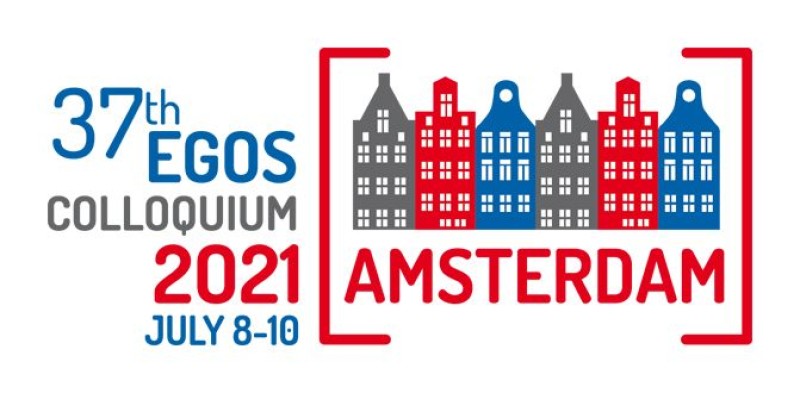Sub-theme 20: Collaboration, Coordination, and Cooperation across Organizations: Meaning(s), Types, Contexts, and Determinants
Call for Papers
Organizations work together to attain strategic outcomes (e.g., product innovation, market entry, or social change). The
rising socio-economic and ecological complexity of human existence increasingly calls upon organizations to work together
through a variety of arrangements, such as multi-partner alliances, cross-sector partnerships and R&D consortia. As Biggart
(2016: 1385) notes: “many of the problems that face global societies are organizing problems, problems that deal with systems,
interfaces, culture, networks, institutions, and motivations in all their complexity – exactly the issues that need elucidation.”
While collaboration and cooperation are often used as terms to refer to interorganizational arrangements
(Cropper et al., 2008), together with coordination, they are most often defined as behavior or practices
for successful IORs (Ashkenas, 2005), in which the common goals are achieved. Accordingly, this trilogy of terms has received
extensive attention in the literature (Alter, 1990; Oliver, 1990; Parmigiani & Rivera-Santos, 2011).
Conceptual
clarity is a precondition for scientific development, along with clear assumptions. Despite recent attempts at clarifying
the concepts of collaboration, coordination and coordination (Gulati et al., 2012; Salvato et al., 2017), the field has not
yet agreed upon basic aspects of each concept. Recent efforts (Castañer & Oliveira, 2019) exist which might deserve discussion
in light of the desired convergence which can bring greater conceptual clarity and research cumulativeness.
We welcome submissions which address the meanings and thus the definitions of these term along with related others such
as coopetition, cooptation or integration by means of either literature reviews, empirical research, or conceptual discussions.
Typologies usually provide a first step in conceptual clarification (McKelvey, 1978). We welcome conceptual and empirical
studies about the challenges and dynamics of collaboration, coordination and cooperation whether in, for instance, R&D
alliances (Faems et al., 2007), or marketing channels (Heide, 1994) or cross-sector partnerships (Stadtler & van Wassenhove,
2016).
Several studies have used the term collaboration has evoked distinctive elements of relational commitment
or quality (Ariño & de la Torre, 1998) and fair behavior in alliances (Luo, 200). Participation in decision-making and
the feeling of inclusiveness (‘being included’) might be a key dimension of collaboration. Further studies that elucidate
the meaning of collaboration are desirable.
Suggested questions, but not limited to include:
How are and should the terms of collaboration, coordination and cooperation be defined? Does or should it depend on the theory approach? How does it depend on the type of IOR studied and the field context?
How do the terms of collaboration, coordination and cooperation in the IOR context relate to other notions such as cooptation, coopetition, control, interaction and integration?
How does collaboration (helping behavior) depend on perceptions of procedural and distributive justice?
How does the presence of competition affect coordination, cooperation and collaboration?
Do the ‘emerging’ forms of IORs such as ecosystems and platforms require new ‘behavior’ concepts other than existing ones such as collaboration, coordination and cooperation?
References
- Alter, C. (1990): “An exploratory study of conflict and coordination in interorganizational service delivery systems.” Academy of Management Journal, 33 (3), 478–502.
- Ariño, A., & de la Torre, J. (1998): “Learning from failure: Towards an evolutionary model of collaborative ventures.” Organization Science, 9 (3), 306–325.
- Ashkenas, R. (2015): “There is a difference between cooperation and collaboration.” Harvard Business Review, 20, 1–3.
- Biggart, N. (2016): “Biggart’s lament.” Journal of Management Studies, 53 (8), 1381–1387.
- Castañer, X., & Oliveira, N. (2019): “Collaboration, coordination and cooperation between organizations.” Working paper.
- Cropper, S., Ebers, M., Huxham, C., & Ring, P.S. (2008): The Oxford Handbook of Inter-Organizational Relations. Oxford: Oxford University Press.
- Doz, Y.L. (1996): “The evolution of cooperation in strategic alliances: Initial conditions or learning processes?” Strategic Management Journal, 17 (S1), 55–83.
- Faems, D., Janssens, M., & van Looy, B. (2007): “The initiation and evolution of interfirm knowledge transfer in R&D relationships.” Organization Studies, 28 (11), 1699–1728.
- Gulati, R., Wohlgezogen, F., & Zhelyazkov, P. (2012): “The two facets of collaboration: Cooperation and coordination in strategic alliances.” Academy of Management Annals, 6, 531–583.
- Heide, J.B. (1994): “Interorganizational governance in marketing channels.” Journal of Marketing, 58 (1), 71–85.
- Luo, Y. (2008): “Procedural fairness and interfirm cooperation in strategic alliances.” Strategic Management Journal, 29 (1), 27–46.
- McKelvey, B. (1978): “Organizational systematics.” Management Science, 24 (13), 1428–1440.
- Oliver, C. (1990): “Determinants of interorganizational relationships: Integration and future directions.” Academy of Management Review, 1 5(2), 241–265.
- Parmigiani, A., & Rivera-Santos, M. (2011): “Clearing a path through the forest: A meta-review of interorganizational relationships.” Journal of Management, 37 (4), 1108–1136.
- Salvato, C., Reuer, J., & Battigalli, P. (2017): “Cooperation across disciplines: A multilevel perspective on cooperative behavior in governing interfirm relations.” Academy of Management Annals, 11, 960–1004.
- Stadtler, L., & van Wassenhove, L.N. (2016): “Coopetition as a paradox: Integrative approaches in a multi-Company, cross-sector partnership.” Organization Studies, 37 (5), 655–685.


